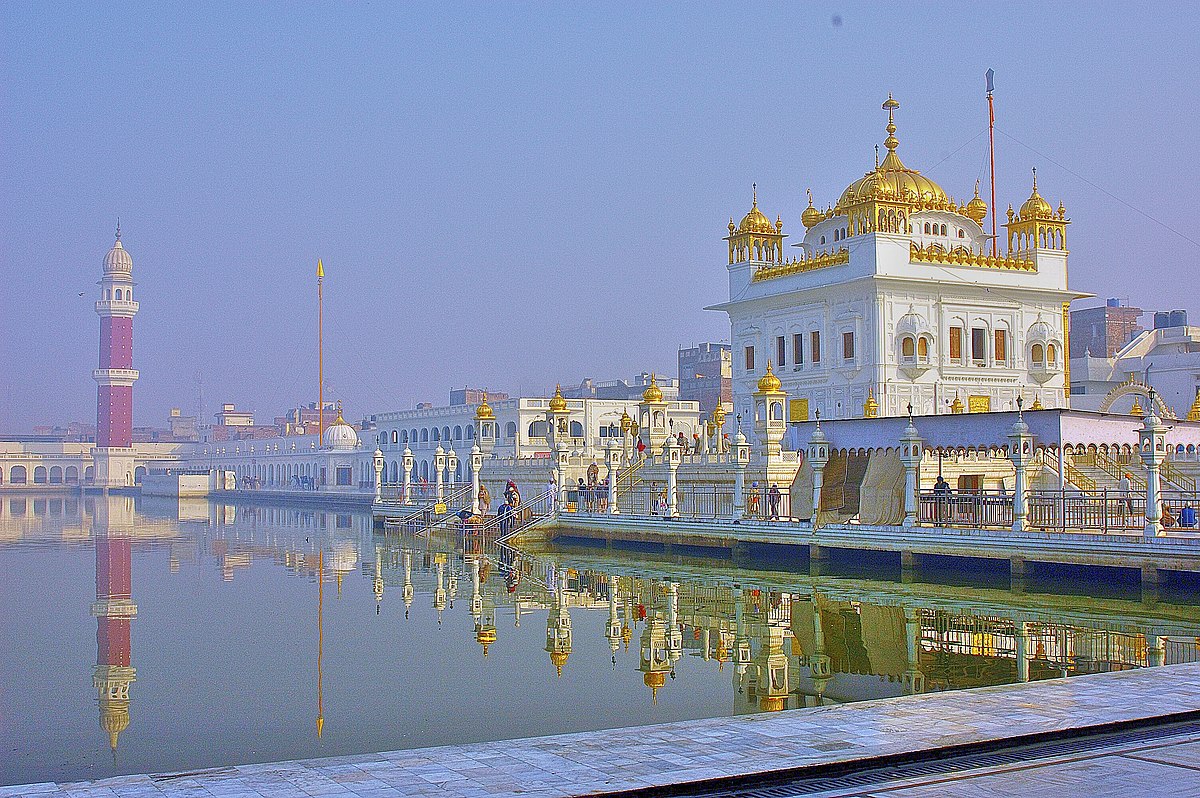
Located in the Amritsar district of Punjab, India, Tarn Taran Sahib is a place of deep spiritual significance in Sikhism. The name "Tarn Taran" means "savior of the stars" and this Gurdwara lives up to its name as it is a guiding light for countless devotees seeking spiritual solace and renewal.
Origin & History
The history of Tarn Taran Sahib is deeply related with the development and evolution of Sikhism.The Gurudwara was built in the early 17th century and its foundation stone was laid by the fifth Sikh Guru, Guru Arjan Dev Ji who is known as the compiler of Guru Granth Sahib, the central religious scripture of Sikhism . Tarn Taran Sahib Sarovar is known for its medicinal properties.
Significance
Tarn Taran Sahib holds great significance in Sikh history and is associated with several historical events. Guru Arjan Dev Ji compiled the Adi Granth, the first rendition of the Sikh holy scripture, at Tarn Taran Sahib. This compilation process was a significant event in Sikh history, and the Adi Granth later evolved into the Guru Granth Sahib, the central religious scripture of Sikhism.
Tarn Taran Sahib has witnessed several historical events, including the participation of Sikh warriors in the Battle of Amritsar (1629) during the reign of Guru Hargobind Ji.
Architecture
The architecture of Tarn Taran Sahib is a great testament to Sikh craftsmanship and design. The Gurdwara is a magnificent three-storied structure with intricate frescoes and decorative designs. The golden dome of the Gurdwara shines in the sunlight which adds to the spiritual atmosphere.
One of the characteristics of Tarn Taran Sahib is its central monument, the Darbar Sahib. It contains the Guru Granth Sahib, the central religious scripture of Sikhism.
Devotees gather here to listen to the hymns and teachings that echo through the marble halls, creating a peaceful and devotional atmosphere.
Sarovar Sahib
One of the most important historical events associated with Tarn Taran Sahib is the digging of the sarovar (holy pool) adjacent to the Gurudwara. It is believed that sarovar water has healing properties and can purify a person's sins. The creation of the Sarovar was a symbol of Guru Arjan Dev Ji's vision to provide spiritual solace and a place of recovery for all.
Spreading nearly 220 x 180 meters, the Sarovar embodies purity and healing The Sarovar is known for its medicinal properties. Immersion in its holy water is believed to cleanse the soul and heal the body .
Festivals & Celebrations
Tarn Taran Sahib comes to life during major Sikh festivals. The celebrations here are grand and vibrant, with devotees from various backgrounds participating wholeheartedly.
Events like Gurpurabs (birth anniversaries of Sikh Gurus), particularly Guru Arjan Dev Ji's Gurpurab, are celebrated with immense enthusiasm.
Community Service
One of the basic principles of Sikhism is seva, or selfless service.Tarn Taran Sahib represents this principle through langar, a community kitchen that provides free meals to all visitors regardless of their background or beliefs. This Langar is one of the largest in the world and operates round the clock ensuring that no one goes hungry.
Impact on Local Community
Tarn Taran Sahib has a profound influence on the local community. It provides education and health services to the underprivileged and provides professional training that empowers people to become independent . The Gurdwara's outreach programs extend beyond its religious functions, making it a center for positive social change.
Conclusion
Tarn Taran Sahib is a symbol of spiritual renewal, historical significance and community service. It depicts the values of Sikhism, offers comfort to the soul, celebrates the rich history of the faith and serves as a medium of hope for those in need.
Whether anyone is looking for a place for worship, historical research or an opportunity for selfless service, Tarn Taran Sahib welcomes all with open arms, nourishing the mind, body and spirit.
Note- We have made every effort to ensure the accuracy and reliability of the information provided. However, this content is intended for informational purposes only and reflects historical and cultural perspectives. DVN does not assume responsibility for any disputes or actions that may arise from the use of this content. If you believe any information is incorrect or misleading, please contact us.